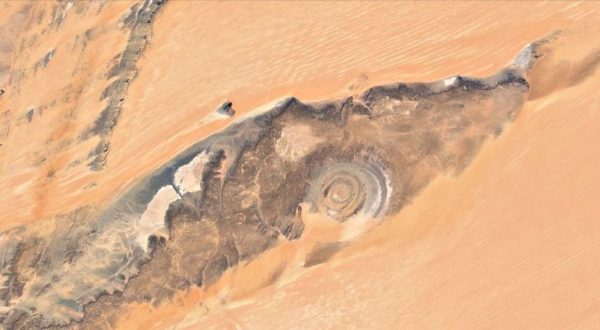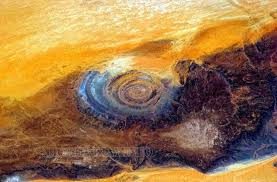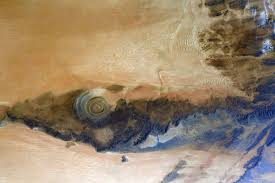In the vast expanse of the Sahara Desert in Mauretania lies a geological wonder, a mysterious structure that has intrigued scientists and space enthusiasts alike.

Known as the Richat Structure, this enigmatic formation measures approximately 50 km (32 miles) in diameter and stands as a testament to the captivating mysteries that the Earth’s surface holds.
The Richat Structure has been a prominent landmark since the earliest space missions, catching the attention of observers due to its nearly perfect circular shape. Often referred to as the ‘bull’s eye,’ this unique rock formation has become a symbol of intrigue and speculation.

Situated between the Tiris Zemmour and Adrar in the northernmost region of Mauritania, the Richat Structure stands amidst thousands of square miles of seemingly featureless desert. Its visibility from space adds to its allure, prompting questions about its origin and the forces that shaped it over millions of years.
Initially, the structure was thought to be the aftermath of a meteor crater impact, a common assumption for circular geological features.

However, closer examination revealed a middle that lacked shock-altered rock, casting doubt on the meteoric origin theory. The absence of a dome of igneous or volcanic rock also challenged the hypothesis that the Richat Structure resulted from a volcanic eruption.
As scientific understanding evolved, a new narrative emerged. Many now believe that the layered sedimentary rock composing the Richat Structure was formed by a large dome of molten rock uplifting from the depths of the Earth.

Over time, this molten rock reached the surface and underwent shaping by the forces of wind and water, ultimately sculpting the captivating structure visible today.
The Richat Structure stands as a testament to the dynamic geological processes that have shaped our planet. Its near-perfect circularity, still a mystery, continues to capture the imagination of scientists and explorers.

While theories abound, the enigma of the Richat Structure persists, inviting further investigation and adding to the allure of Earth’s ancient and mysterious landscapes.





